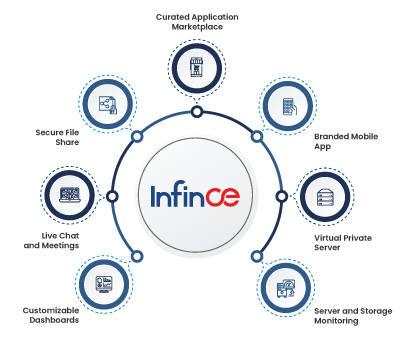How can businesses pick the right enterprise collaboration platform?
Recently, we wrote about the leading online collaboration tools that facilitate remote work in 2020 and which are the best alternatives to Microsoft Teams your business can consider. We know how important it must be for you to facilitate remote work collaboration among your teams positioned far and wide, at their homes or co-working spaces. That’s why this time we decided to share a few tips on what all you need to consider while choosing the best enterprise collaboration software for your business.
Half the year down, COVID-19 is still doing its rounds worldwide, pushing the economy to a slow reopening after months of lockdown. While some countries are experiencing drastic spikes in the number of cases, others are witnessing a gradual decline of cases. Irrespective of their geographical positions, a huge section of the global workforce is poised to continue working remotely for a long time to come in the interest of safety.
Read more: 5 Tips To Effectively Manage Remote Teams During Challenging Times
So, here are 5 things you need to keep in mind while choosing an enterprise collaboration platform for your business:
1. Evaluate your needs
All modern-day enterprise collaboration platforms have tons of features and each of these features may sound exciting when you hear or explore them initially. However, not all businesses need all these features to be present in their collaboration software. You need to go back to the drawing board, run a campaign internally within your workforce to identify the challenges they face in collaboration, the tools, and support they need through a collaboration platform, and then have a look at features offered by leading vendors. This will help to keep your digital infrastructure optimized and personalized according to the needs of your workforce.
Rather than the management implementing a platform that is most appealing to them, the focus here is to garner requirements from the actual workforce who would be using this platform for collaboration and then pick a vendor that offers these features on demand.
2. Scalability
It is likely that every collaboration software you came across in your search will be a cloud-based one. Thus, you assume that they will be scalable. But scalability is not restricted to just storage on the cloud. By scalability, we mean the ability of the platform to grow across all dimensions as more departments and processes in your business go into the platform. It includes support for feature additions, easy development of new features, accommodating multiple processes and new policies over time, and above all, handles more complex computing needs in the future based on your business’s growth.
A digital collaboration platform is not something that you invest and implement for the short term. It will be a crucial digital platform that will grow with your business and adapt to changing work trends in the future.
Read More: How IT Teams Can Prepare to Support Remote Workforce During COVID-19
3. Cost Efficiency
As described in one of the previous points, your business may not need all features as advertised by vendors. By subscribing to more features, you will end up paying more on the subscription fee if the platform offers a “pay for what you use” model of subscription. Some features may be needed only in the future when your business grows and more employees use these features. Hence a platform that allows you to configure your subscription is the most desired option from a cost perspective. Once you identify the features you really need as described earlier, you can pick a vendor that offers you the freedom to pay for only those features on demand.
4. Security
When almost all of your employees work remotely, it is likely that confidential and sensitive customer information will be handled through the enterprise collaboration platform you deploy. Hence there needs to be an adequate security protocol in place within the software that lets you make governing policies on data and information exchange within the digital environment. Permissioned access, transparent work and project management, logged activities, etc. will be required to ensure that there is no compromise in security.
Read more: Why Is InfinCE A Better Choice For Safe Video Calling Than Zoom
5. Usability
When employees are suddenly moved into a new paradigm of working, there will be disruptive impacts on their daily routine. On top of that, if they are allotted a new collaboration platform without adequate onboarding time and awareness, the chaos will multiply many folds. To make a smoother transition into a new enterprise collaboration software, companies must pick a digital platform that has a high focus on usability and provides a comprehensive support and training exercise to help make the transition seamless.
These tips could be video demonstrations, how to use manuals, a comprehensive FAQ section, dedicated support associates available all time, and much more. Platforms with intuitive interfaces and a shorter learning curve can be given preference for quicker adoption in your workforce.
The remote work culture is here to stay for a long time. We did not mean to say that there will not be a return to the office, but even when work resumes from office, employees would certainly feel much more comfortable to avail of Work from Home options occasionally. The pandemic showed us that it is possible to maintain your productivity levels while working from home to be on par with an office-based culture.
Read more: How InfinCE Helps You Quickly Transit to Remote Working
Hence the only requirement is that you make the right collaboration platform available to employees. With secure information policies, seamless cloud-based deployment and management, InfinCE offers the best enterprise collaboration platform for today’s businesses. Get in touch with us to explore more.





